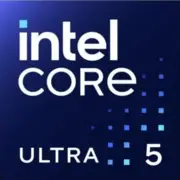Apple M4 10 Cores vs Intel Core Ultra 5 125H
CPU Comparison Result
Below are the results of a comparison of
Apple M4 10 Cores
and
Intel Core Ultra 5 125H
processors based on key performance characteristics, as well as power consumption and much more.
Advantages
- Higher Technology: 3 nm (3 nm vs 7 nm)
- Newer Launch Date: May 2024 (May 2024 vs December 2023)
- More Total Cores: 14 (10 vs 14)
Basic
Apple
Label Name
Intel
May 2024
Launch Date
December 2023
Laptop
Platform
Laptop
M4 10 Cores
Model Name
?
The Intel processor number is just one of several factors - along with processor brand, system configurations, and system-level benchmarks - to be considered when choosing the right processor for your computing needs.
Core Ultra 5 125H
Apple M4
Code Name
Meteor Lake
CPU Specifications
10
Total Cores
?
Cores is a hardware term that describes the number of independent central processing units in a single computing component (die or chip).
14
10
Total Threads
?
Where applicable, Intel® Hyper-Threading Technology is only available on Performance-cores.
18
4
Performance-cores
4
6
Efficient-cores
10
4.51 GHz
Performance-core Base Frequency
3.6 GHz
2.89 GHz
Efficient-core Base Frequency
2.3 GHz
-
Performance-core Max Turbo Frequency
?
Maximum P-core turbo frequency derived from Intel® Turbo Boost Technology.
4.5 GHz
192K per core
L1 Cache
112 KB per core
16MB shared
L2 Cache
14 MB
-
L3 Cache
18 MB
Apple M-Socket
CPU Socket
?
The socket is the component that provides the mechanical and electrical connections between the processor and motherboard.
Intel BGA 2049
44
Multiplier
-
No
Unlocked Multiplier
-
3 nm
Technology
?
Lithography refers to the semiconductor technology used to manufacture an integrated circuit, and is reported in nanometer (nm), indicative of the size of features built on the semiconductor.
7 nm
22 W
TDP
28 W
100°C
Max. Operating Temperature
?
Junction Temperature is the maximum temperature allowed at the processor die.
-
ARMv9
Instruction Set
?
The instruction set is a hard program stored inside the CPU that guides and optimizes CPU operations. With these instruction sets, the CPU can run more efficiently. There are many manufacturers that design CPUs, which results in different instruction sets, such as the 8086 instruction set for the Intel camp and the RISC instruction set for the ARM camp. x86, ARM v8, and MIPS are all codes for instruction sets. Instruction sets can be extended; for example, x86 added 64-bit support to create x86-64. Manufacturers developing CPUs that are compatible with a certain instruction set need authorization from the instruction set patent holder. A typical example is Intel authorizing AMD, enabling the latter to develop CPUs compatible with the x86 instruction set.
-
28 billions
Transistor Count
-
Memory Specifications
LPDDR5X-7500
Memory Type
?
Intel® processors come in four different types: Single Channel, Dual Channel, Triple Channel, and Flex Mode. Maximum supported memory speed may be lower when populating multiple DIMMs per channel on products that support multiple memory channels.
DDR5-5600,LPDDR5x-7467
32 GB
Max Memory Size
?
Max memory size refers to the maximum memory capacity supported by the processor.
96GB
4
Memory Channels
?
The number of memory channels refers to the bandwidth operation for real world application.
2
120 GB/s
Max Memory Bandwidth
?
Max Memory bandwidth is the maximum rate at which data can be read from or stored into a semiconductor memory by the processor (in GB/s).
-
No
ECC Memory Support
-
GPU Specifications
Apple M4 GPU (10-core)
Integrated Graphics Model
?
An integrated GPU refers to the graphics core that is integrated into the CPU processor. Leveraging the processor's powerful computational capabilities and intelligent power efficiency management, it delivers outstanding graphics performance and a smooth application experience at a lower power consumption.
True
500 MHz
GPU Base Frequency
-
1800 MHz
GPU Max Dynamic Frequency
-
160
Execution Units
?
The Execution Unit is the foundational building block of Intel’s graphics architecture. Execution Units are compute processors optimized for simultaneous Multi-Threading for high throughput compute power.
-
4.6 TFLOPS
Graphics Performance
-
Benchmarks
Cinebench R23 Single Core
Apple M4 10 Cores
2144
+23%
Core Ultra 5 125H
1739
Cinebench R23 Multi Core
Apple M4 10 Cores
12377
Core Ultra 5 125H
15227
+23%
Geekbench 6 Single Core
Apple M4 10 Cores
3716
+65%
Core Ultra 5 125H
2256
Geekbench 6 Multi Core
Apple M4 10 Cores
14579
+42%
Core Ultra 5 125H
10239
Passmark CPU Single Core
Apple M4 10 Cores
4471
+25%
Core Ultra 5 125H
3563
Passmark CPU Multi Core
Apple M4 10 Cores
25085
+17%
Core Ultra 5 125H
21496








